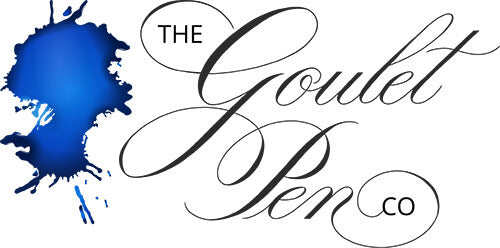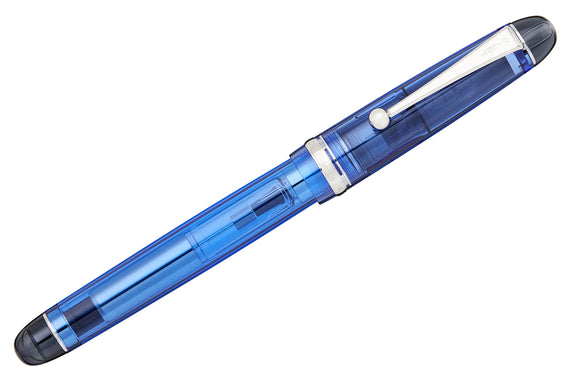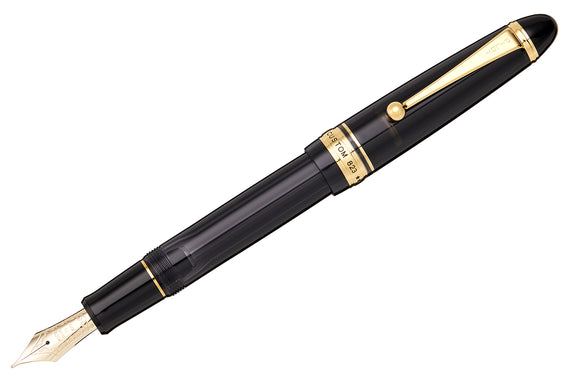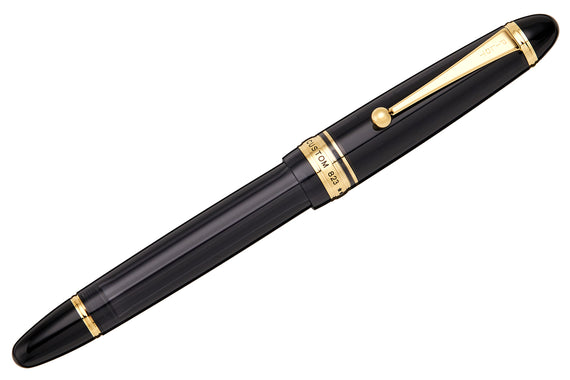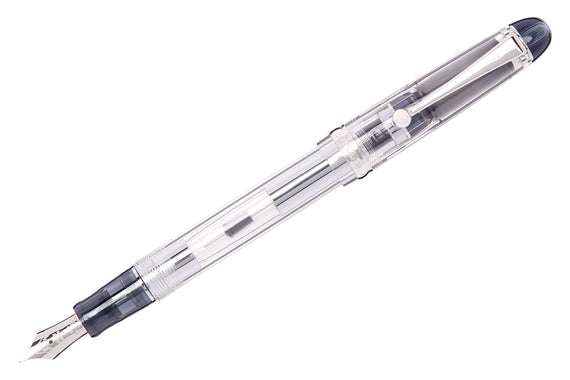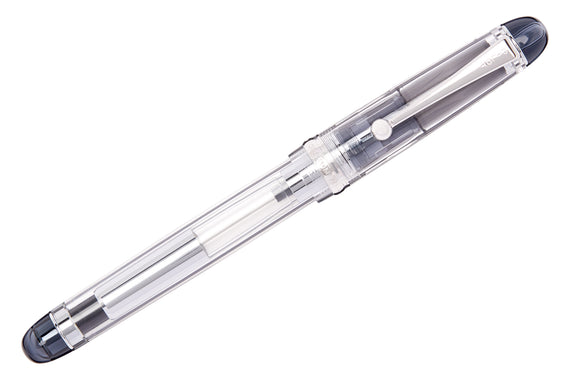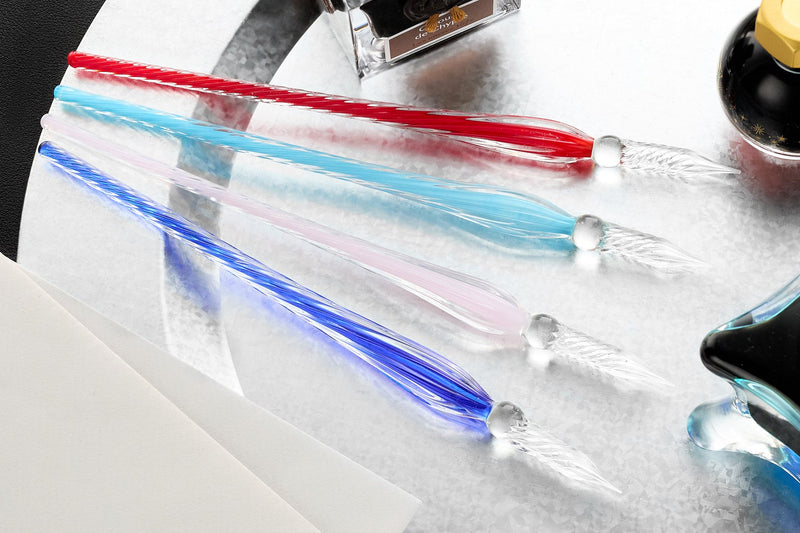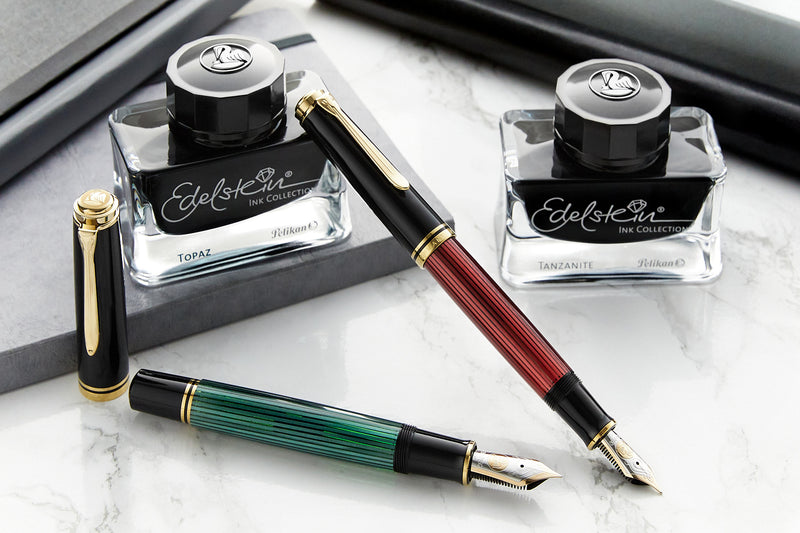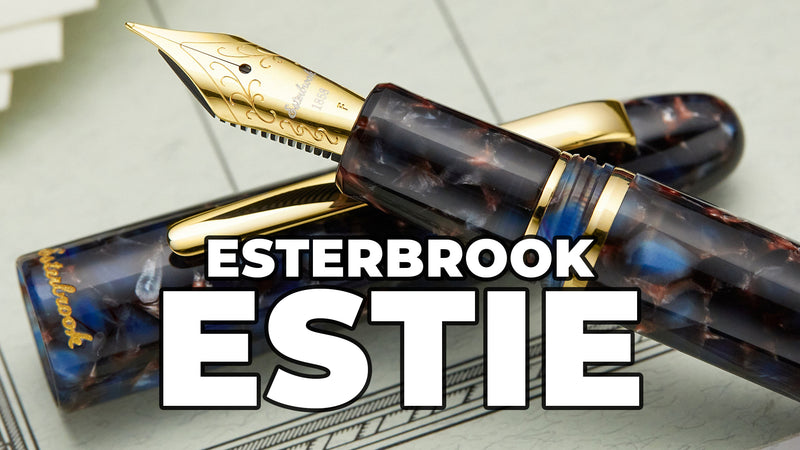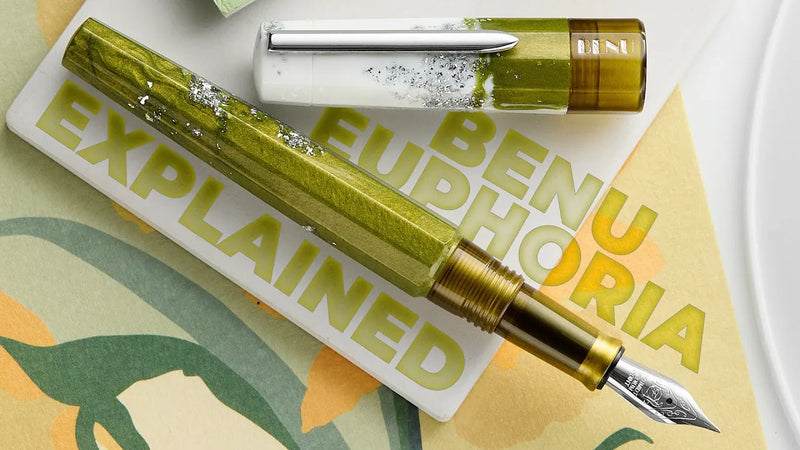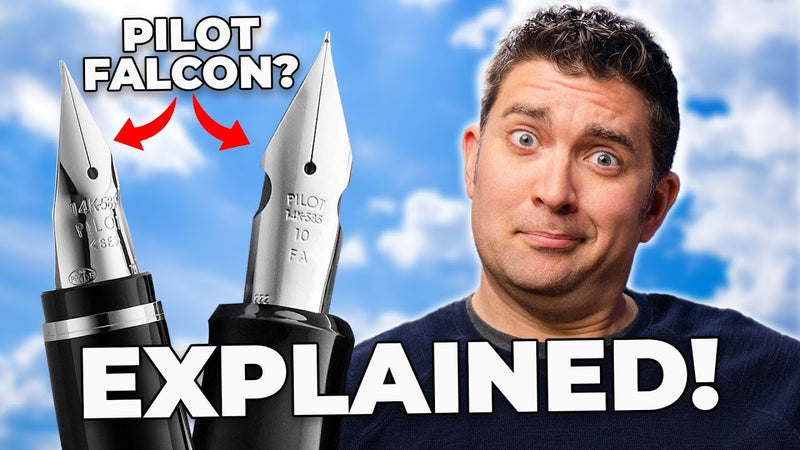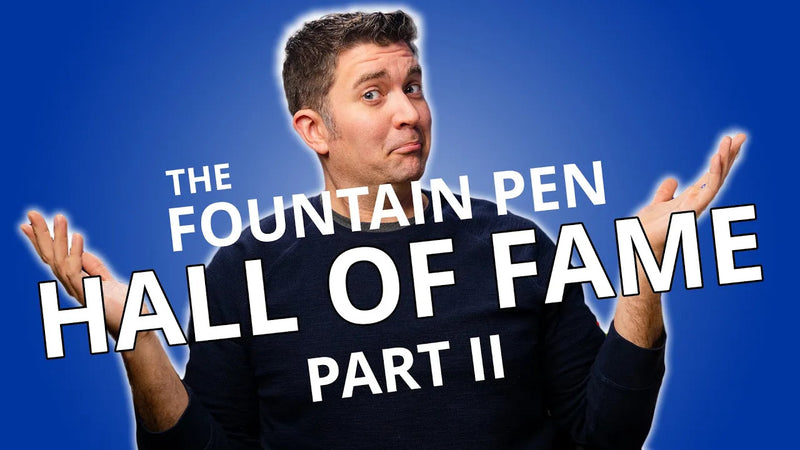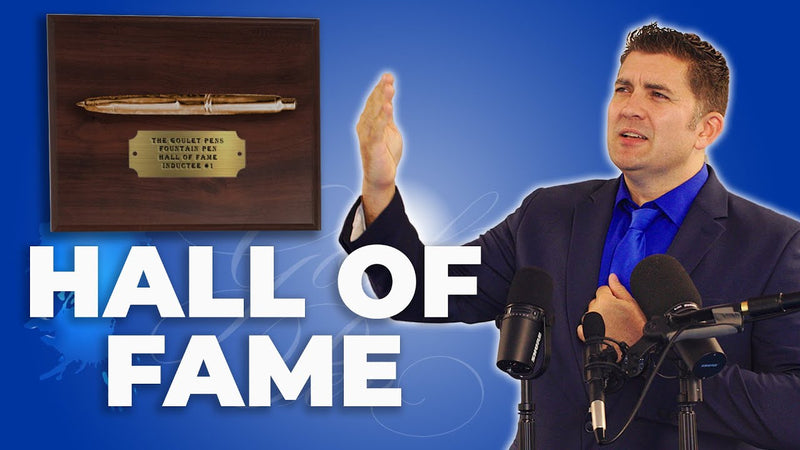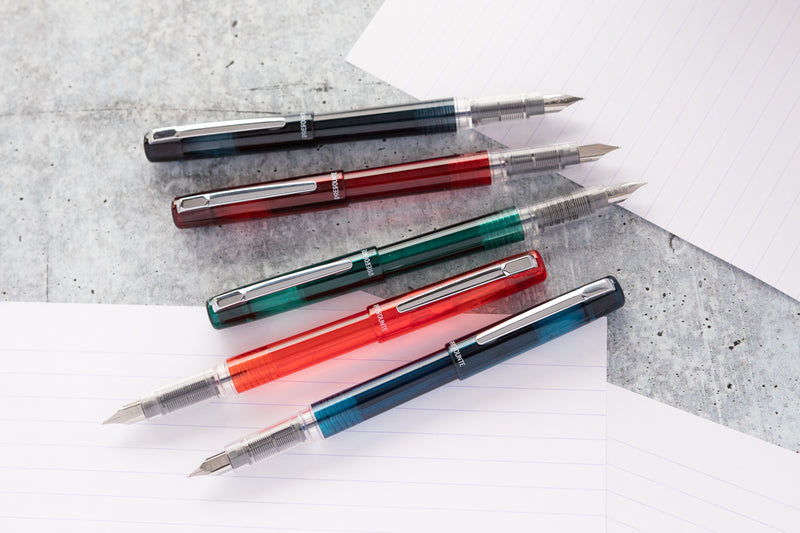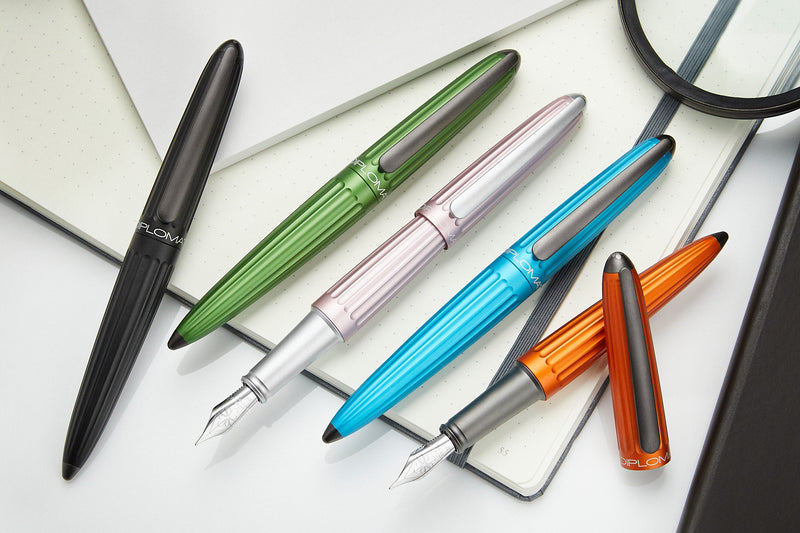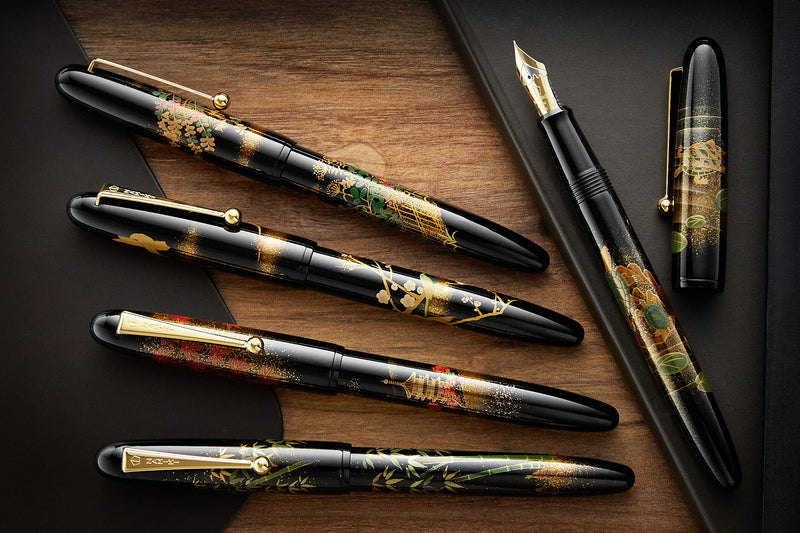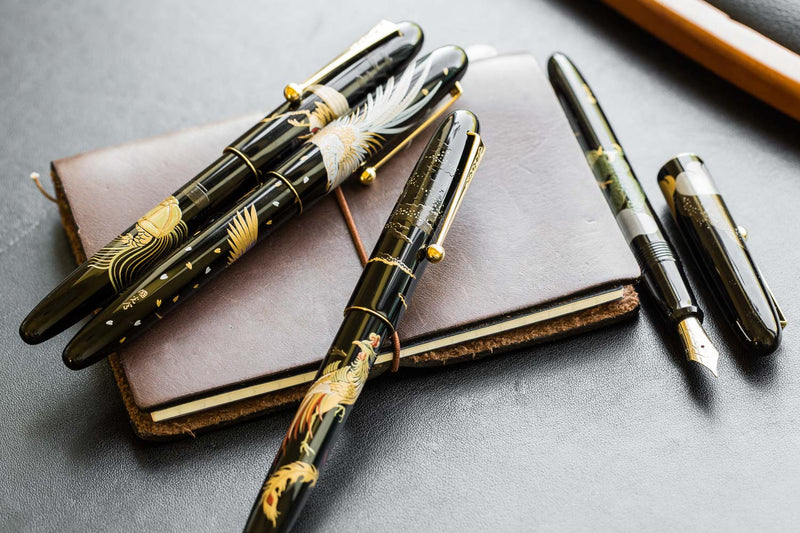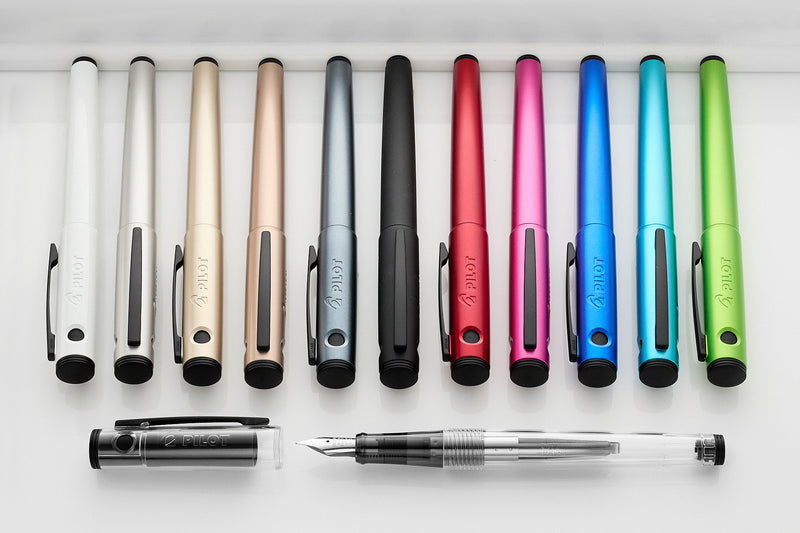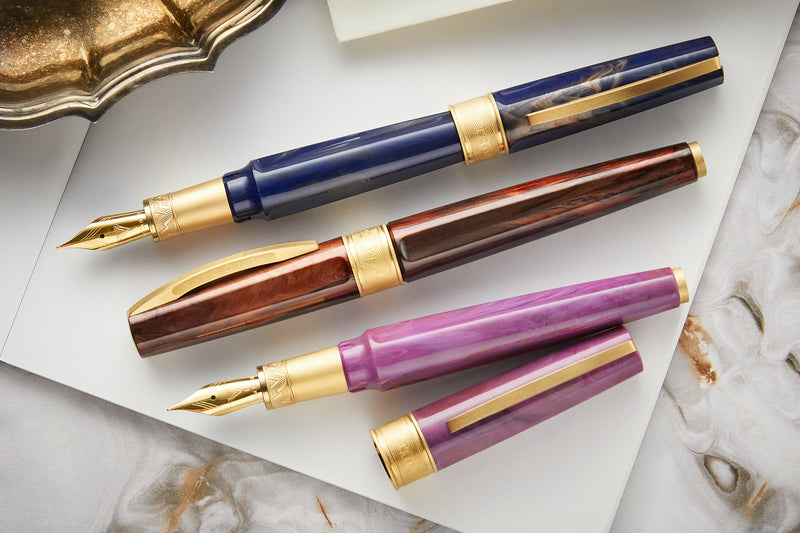Pilot Custom Pens Explained
If you know anything about Pilot pens, you know that the word "Custom" is shown in a lot of the model names, and that there's also a bunch of numbers involved. We've gotten enough questions about them as a fountain pen retailer that we thought it'd be helpful to put together this explainer video & blog that will cover all the modern Pilot Custom pens available in the US, and even a few that aren't.
History
Pilot Pens have been around since 1918. Back in 1971 they came out with the Pilot Custom "K" series, which was the first generation of the series that would endure for over 50 years and still going strong. They're called Custom because they're pens with nicer materials and more nib grind options than were available from other standard pens at the time. By offering pens with more options, users were able to have more of a "custom" experience to their personal tastes.
Today they're mostly known for being reliable writers with a timeless design. They produced a number of other pens in the Custom lineup over the years, some of which have been discontinued. But the ones that are still available today come in different shapes and sizes, and it can be confusing to tell them apart.
Pilot Numbering/Nomenclature:
The word 'Custom' by itself is used for pen models with rounded ends and a ball clip. Most of these were originally offered in gold trim, though some have since released with rhodium trim versions.
'Custom Heritage' is used for pen models with a flat top and bottom. The clip is more flat and subtle on these models.
You'll notice there are a bunch of numbers associated with the Pilot Custom models, and they might seem kind of random, but there's a method to the madness. Pilot doesn't always perfectly follow these rules, but it's still a general helpful guide!
Look at any Custom model with numbers in it, and identify the first two digits. This represents how many years after Pilot's founding in 1918 that the pen model was originally released. For example, the Custom 74 was released in the year 1992, which is 74 years after 1918. The Custom 823 was released in the year 2000, which was 82 years after 1918.
The third digit generally refers to its price. Multiply it by 10,000, and this number represents how much it retailed in Japanese yen at the time of its release. If there isn't a third digit, it's kind of assumed it's a 1. So the Custom 74 would have sold for around 10k JPY when it was released; while the Custom 823 would have cost 30k JPY.
Honestly today it's also not all that essential to shopping for the pens or certainly for using and enjoying them. The two Pilot Custom pens they've released after their 100th anniversary in 2018 were the Custom Heritage SE and Custom Urushi, with no numbers at all. I don't know what they'll do for future pens, will it be 4 digits? Just names and letters? Who knows. :)
The centerband is often engraved with the pen model name
Pilot Custom Nib Basics:
There's a lot to talk about with the Pilot nibs, as they make them all custom and in-house in Japan, and the grinds and nib dimensions are unique to Pilot. The nibs on all the Custom pens either 14k or 18k gold, both of which write great.
Pilot uses their own numbering convention to indicate the overall size, that doesn't quite match up to other nib manufacturers like JoWo or Bock. As a general rule, the lower the number on Pilot's nib, the smaller it is. The larger the number, the bigger the nib. Pilot's #5 nib is slightly larger than the #5 nib you'll see from JoWo or Bock, and they're not interchangeable. The Pilot #10 is halfway between a JoWo #5 and #6. The Pilot #15 is about like a JoWo #6, and the Pilot #30 is comparable to a JoWo #8.
Fun fact: if you look down at the base of the nib, you'll see 3 or 4 numbers really small down there. You basically need a loupe to read it, but it's a date stamping indicating when the nib was manufactured. It's stamped month-then-year. It's neat because I can see on my vintage Pilot Custom K that it was made in 1971, the year the Custom line was introduced!
A little known feature about the Pilot Custom pens is the way they fill, which I absolutely love! Most fountain pens have a filler hole tucked up in the feed right at the base of the grip, so you need to submerge the whole nib up to the grip to fill from a bottle. But the Pilot feeds have a filler hole in the feed close to the end, only about 1cm or ⅜" from the tip of the nib. That means you can fill from bottles with lower ink levels (like ink samples!), and potentially fill your pen without getting any ink on your grip at all, with some practice and skill, of course.
Almost all the Pilot Custom pens fill via Pilot cartridge/converter. There are two exceptions: the Custom 823 fills via vacuum, and the Custom Heritage 92 fills via piston.
Pilot Custom Pen Model Overview
There are many different Pilot Custom pen models currently produced, most of which are currently available in the US. I'll cover these in particular model by model, starting with the most affordable.
Pilot Custom 74
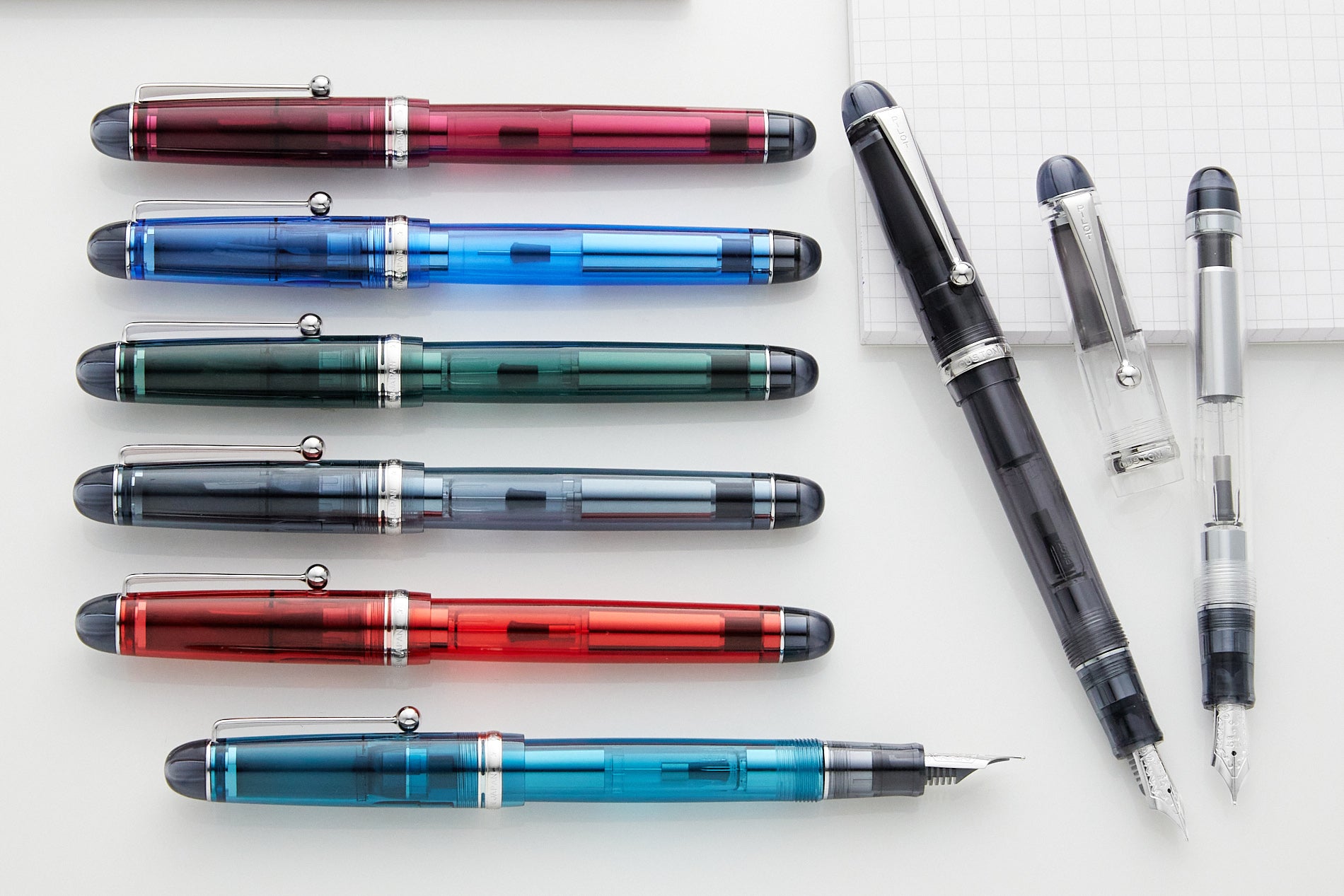
The Pilot Custom 74 is a pen near and dear to my heart, as it was my first ever gold-nib fountain pen that I acquired back in 2011. This pen model has been around since 1992. In Japan, the Custom 74 is primarily offered in solid colors with gold trim, while the US market offers various translucent colors with silver trim. The Custom 74 has rounded ends, a ball clip, and smoky translucent finials and grip on all color variants. It's a relatively lightweight pen and writes fantastic, as Pilots do.
The Custom 74 comes with a #5 size Pilot nib, the smallest in their Custom pen lineup. The 14k gold nib has a nice little bounce to it and is overall a really nice writing experience. They're made in extra-fine, fine, medium, and broad. You'll get a consistent ink line with these nibs, and the EF and F in particular are finer than most other pens, which you may enjoy. Medium tends to be more of my go-to, and Rachel loves the broad, but I honestly do love them all. With the cap insert, the nib stays wet and ready to go longer than your average fountain pen. It comes with a Pilot CON-70 converter, their high-capacity push-button filler. However, they can also accept the standard CON-40 converter or Pilot/Namiki ink cartridges.
This is one of my most highly recommended entry-level gold nib pens. It was a fantastic introduction for me, and it really writes so well and doesn't break the bank. It's the most affordable Pilot Custom pen and the one I'd recommend if you're wanting to try out the series.
Pilot Custom Heritage 92

The Custom Heritage 92 is an often overlooked model in the Custom series. It's close in size to the Custom 74, with the same grip and #5 14k gold nib. The flat ends distinguish it as a Custom Heritage, which you can see engraved on the centerband, as well as the sword-shaped clip. The most noticeable difference between these models is the piston filling mechanism, which you can clearly see in this pen.
The Custom Heritage 92 comes in one color, a clear demonstrator. You get that same cool filler hole in the feed, same cap insert, and it's a great daily writer just like the Custom 74.
The Custom Heritage 92 is actually the only piston-filling pen that Pilot currently makes. If you like this model but want a cartridge/converter instead, you can look to the Custom Heritage 91, though it is currently only available in Japan).
Pilot Custom Heritage 912

The Custom Heritage 912 is slightly larger in diameter than the Custom Heritage 92, but the overall length is similar to the Custom 74. The 14k gold nib is slightly larger, in Pilot's #10 size. You can get the Custom Heritage 912 in any color you want as long as it's black, but what it lacks in color offerings they make up for with nib grinds!

Instead of 3 or 4 nibs like the other pens mentioned so far, you get 15 grind options here! Out of all the pens we carry at Goulet Pens, this one has the most expansive nib offering of them all. They have the standard grinds like fine, medium, and broad, but you can also get soft nibs, super broad ones like double broad and coarse, flex nib FA, stub and music, and specialty nibs like posting and waverly.


The sword clip on this pen matches the clip on the Custom Heritage 92 which I really like, and the overall shape is really nice, very classic. It fits proprietary Pilot/Namiki ink cartridges and comes with a CON-70 push button converter just like the Custom 74. The price gets a little higher as the nib size increases, but it's worth it if you want one of these specialty grinds.
Pilot Custom 743

The next model up is the Custom 743, which was introduced in Japan in 1992 but just started coming into the US last year in 2023. It increases in size all around from the Custom 74. We're looking at that classic "cigar shape" pen with the rounded ends, and with this one you get an expansive nib offering like the Custom Heritage 92 with a total of 14 available nib grinds. Except with this one, you get a slightly larger nib with Pilot's #15 nib, which is right around the size of a #6 JoWo.
It has an opaque body that comes in Black (or Verdigris, exclusively available in North America), both with gold trim. You'll see the full range of nibs available on the Black, while the Verdigris has a more limited nib offering.


I think the overall size of this pen is great. It's going to be comfortable for just about any size hand, whether posted or unposted. You get the same great sealing cap and easy filling feed. This is a cartridge/converter pen and comes with a Pilot CON-70. It's been a really popular model since it was brought to the US and I hope to see them expand even more over time. This is a popular alternative for people that want a simpler filling mechanism than its close sibling, the Pilot Custom 823.
Pilot Custom 823

I consider the Pilot Custom 823 to be like the flagship of the Pilot Custom line. It's not the most expensive or fanciest, but it's extremely popular and probably one of the better known models. It's essentially identical in overall size, shape, and nib and feed setup to the Custom 743. The big difference will be that the Custom 823 pens have tinted demonstrator colors which are currently amber, smoke, and clear, and of course, the filling mechanism.
The Custom 823 has a vacuum filler, which is the only Pilot pen that has this. It holds a massive ink capacity (2.55ml) and locks the ink chamber when the piston is closed to make traveling easier with no leaking or burping, which can sometimes happen with pens with a high ink capacity. It's a cool filling mechanism, though will certainly be more ideally suited for those who like to keep the same ink in a pen for a long time, as opposed someone who likes to change colors a lot. High frequency ink changers may prefer the Custom 743.
You get that same larger #15 Pilot nib in 14k gold. Your nib grind options include fine, medium, broad, and, as of 2024, Signature, which is like a really gentle stub nib. It's priced identically to the Custom 743.
Pilot Custom 845 Urushi

So far we've talked about the more entry-level gold nib Pilot Custom pens, and this next one is where we get into a little more of the premium line. At first glance, the Pilot Custom 845 Urushi doesn't look all that different than a Custom Heritage 912, except it is a bit bigger. But what really sets this pen apart is the pen material.
Instead of resin like the others, the body is made of hard rubber often referred to as ebonite, and it's coated with urushi lacquer. Urushi lacquer is a very durable finish that comes from Asian lacquer trees, and their sap is harvested and hand-painted on the barrels to create this hard lacquer coating. Urushi finishing is an ancient craft in Japan going back to the 7th century, and artists train for years to do this type of work. There are two colors of 845 Custom Urushis: the traditional black and a bold red known as vermillion. Both have yellow gold trim with black finials and a black grip.
You'll find the same Pilot cartridge/converter filling system, with the Pilot CON-70 converter included. The feed design is similar, and it has a #15 size nib just like the Custom 743 and Custom 823. However, you're getting an 18k gold nib instead of a 14k one, so the nib will feel ever so slightly bouncier. It also has a two-tone finish, with the yellow gold of the nib showing on the border, and the inside coated in rhodium for a silver look. The trim on this pen is identical to the 743 and 823, and the pen overall is pretty close in proportions to these other two pens as well. Because of the fancier nib and the hand work involved with the urushi lacquer, the Custom 845 Urushi is more of a premium price.
Pilot Custom Urushi

My personal new favorite is the Pilot Custom Urushi. This mammoth pen is new to Pilot as of 2016, and it stands out in terms of its sheer size compared to all the other Custom pens. This will not be a pen suited for everyone! But for a big-handed writer like me, this thing fits like a glove.
As much as I appreciate the size of this pen, the thing I really love the most is the nib. Pilot created an entirely new nib in their lineup for this pen, which is a #30 size, comparable to a #8 JoWo nib which is not seen in very many pens. It's on par with the Sailor King of Pens and the Pelikan m1000 in terms of size, bounce, and presence. It's the biggest and bounciest nib in the Custom lineup, and it writes like an absolute dream. It's an 18k gold nib with a two-tone finish like the 845, with a gold border and rhodium in the middle. The nibs are springy, responsive, wet flowing, and super reliable. And the filler hole within the feed is a huge plus for this monster nib. Same cartridge/converter filling mechanism as all the other Customs here, with a CON-70 converter included.

Like the Custom 845, the Custom Urushi features a urushi lacquer finish over hard rubber, available in black or vermillion, both with gold trim and black accents. It is relatively lightweight for a pen with such a formidable presence, with the whole pen weighing 43g overall. That isn't super light, but the body alone is only 25g, which is actually very reasonable and comfortable and it's plenty long in your hand to write comfortably unposted. I write almost exclusively with it unposted, though you certainly can post it if you want to experience the full heft of this beast.
The larger-than-life nature of this Custom Urushi had been a grail pen of mine for some time and likely lives in that realm for many pen fans out there. It's definitely priced in the grail pen range at $1,500, so it's not something you'll see many folks carrying around but if it's up your alley, I can highly recommend it.
Summary
There's a lot of specific differences between these models that even I struggle to remember after being in this industry for 15 years! For even more detail I welcome you to check out our product pages where we have more pictures, writing samples, detailed measurements, and details of all the available options for all these pens.
Here's a quick summary chart of what was mentioned above:
| Pen Model | Nib | Filling Mechanism | Material | Release Yr | Price |
| Custom 74 | 14k Gold #5 | Cartridge/converter | Resin | 1992 | $ |
| Custom Heritage 92 | 14k Gold #5 | Piston | Resin | 2010 | $$ |
| Custom Heritage 912 | 14k Gold #10 | Cartridge/converter | Resin | 2009 | $$ |
| Custom 743 | 14k Gold #15 | Cartridge/converter | Resin | 1992 | $$$ |
| Custom 823 | 14k Gold #15 | Vacuum | Resin | 2000 | $$$ |
| Custom 845 Urushi | 18k Gold #15 | Cartridge/converter | Urushi | 2002 | $$$$ |
| Custom Urushi | 18k Gold #30 | Cartridge/converter | Urushi | 2016 | $$$$$ |
For a visual side-by-side comparison, you should check out our Pen Plaza. We've photographed all of these pens in closed, open, and posted positions.
Bonus: Other Pilot Custom Pens!
Now as you're searching around the internet you're going to find a lot of other Pilot Custom pens with numbers or names that aren't what I've shared here. Since they've been around 50+ years and there have been many variants retired or ones kept to the domestic Japanese market, you'll find some that look kind of close to the ones in this video but may have some differences.
For example, the Pilot Custom Heritage SE has a shape similar to the Custom Heritage 912, but with colorful marbled resins unique within the Custom lineup. These materials are also available on the Pilot Vanishing Point SE collection. It has a smaller #5 14k gold nib, and is overall a nice pen.

Vintage Custom Pens:
These pens are no longer manufactured; you can read more details on Pilot's Custom history website.
- Custom K series -- the original Custom model launched in 1971. Several variations were available including wood and sterling silver. A resin version was added in 1972. Featured an integrated nib!
- Custom Grandee Tomo -- launched in 1978, gold nib now a separate unit. Seven nib sizes available, with a clip with a split in it.
- Custom67 -- the first with the numbering system, launched in 1979. Additional colors followed shortly thereafter. This is the predecessor to the Custom 74.
- Pilot/Namiki Custom Impressions -- produced in the late 1990's, based on the Custom 74. Inspired by vintage celluloid, but made of cellulose acetate. These rare beauties came with a #5 14k nib. A larger version, a Custom Heritage Impressions LE with a flat-top, was also made. It was the same size as the 845, but with a smaller #10 size nib. And in Japan, a smaller Custom Legance flat-top version was available with a #5 nib. These are super rare and very hard to find even second-hand these days.
Other Currently Manufactured Pilot Custom Pens:
These are pen models that Pilot still makes, but are not (at this time) available to the US market. Many of these are only available in Japan.
- Custom 742 -- Launched in 1993. Based on the Custom 74 (hence the 74 in the name, an exception to the numbering rule), but with a larger #10 nib. The Custom 743 was launched at the same time with an even larger #15 nib. Both are offered in many nib sizes.
- Custom Heritage 91 -- Launched in 2009, with rhodium-plated trim and nib. Same specs as the Custom Heritage 92 but in cartridge/converter format.
- Custom Enju -- a large fountain pen made from Japanese pagoda tree wood, with a #15 18k gold nib.
- Custom Maple - a mid-size fountain pen made from maple wood, with a #10 14k gold nib.
- Custom NS - the only Custom fountain pen with a stainless steel nib.
- Custom Heritage CR -- a twist-action ballpoint pen with a unique 'Cut Ring" centerband.
I hope this was helpful! You can also reach out to our team with any questions you might have. I hope you've enjoyed reading this, and I really hope you get to experience this Pilot Custom line of pens. They're truly some of my favorite pens in the world and I know I'm not alone in this feeling.
